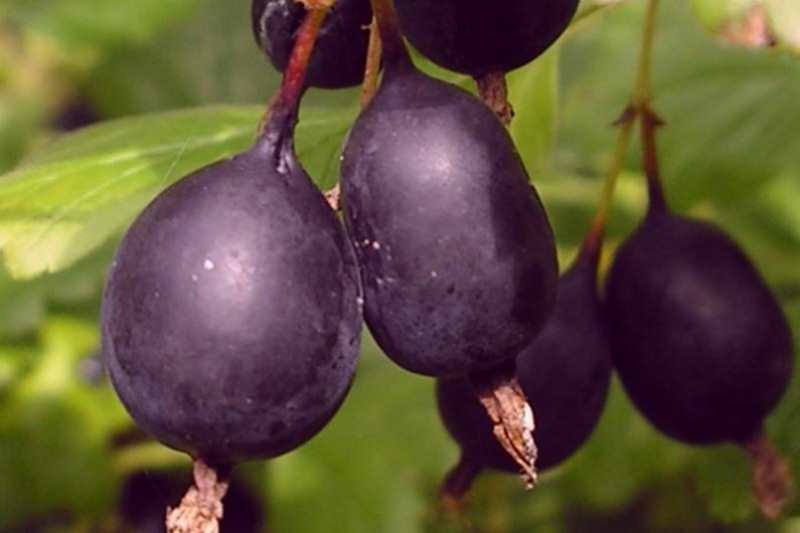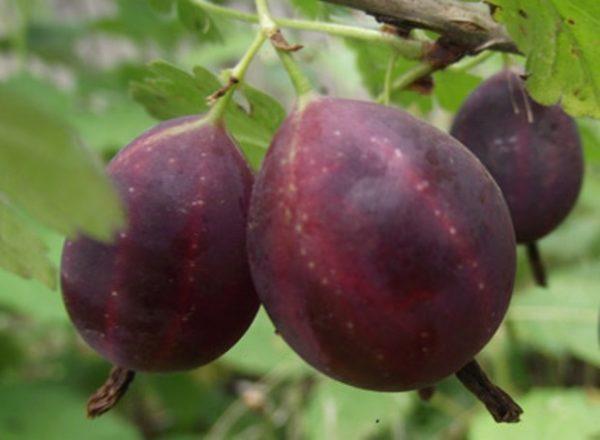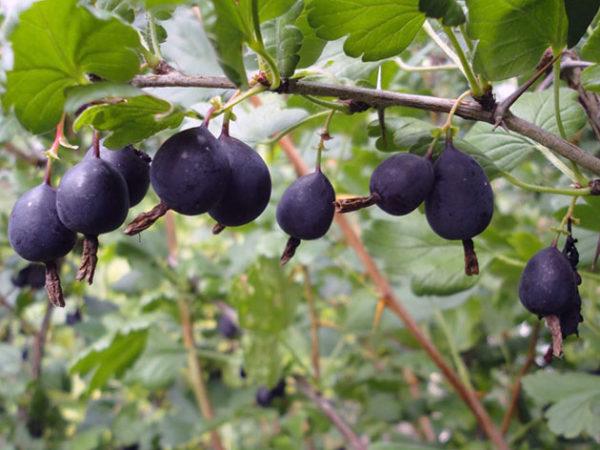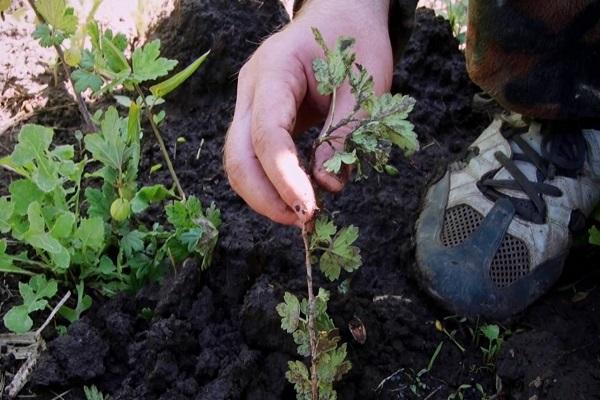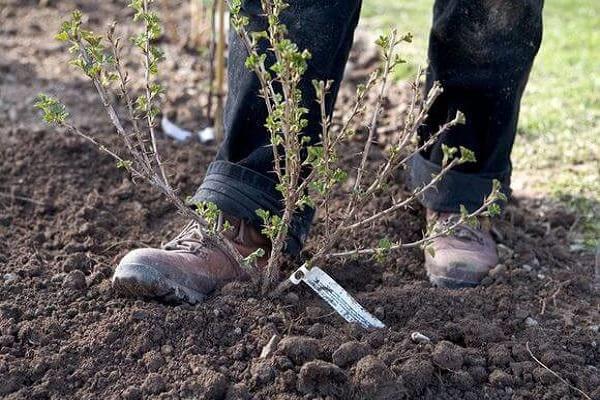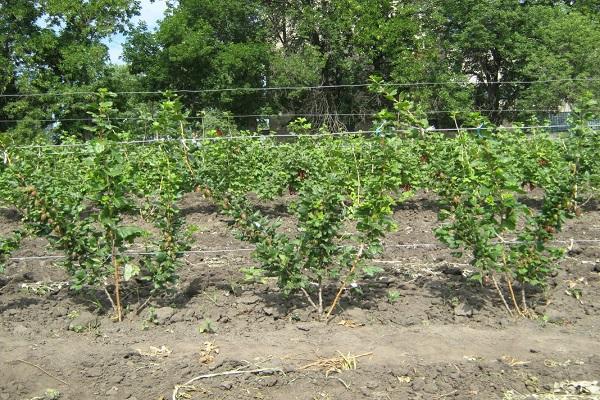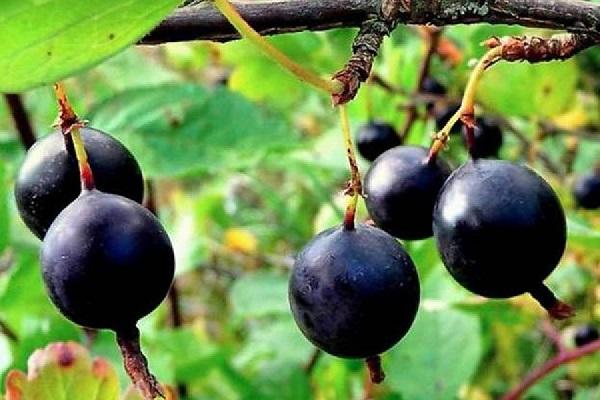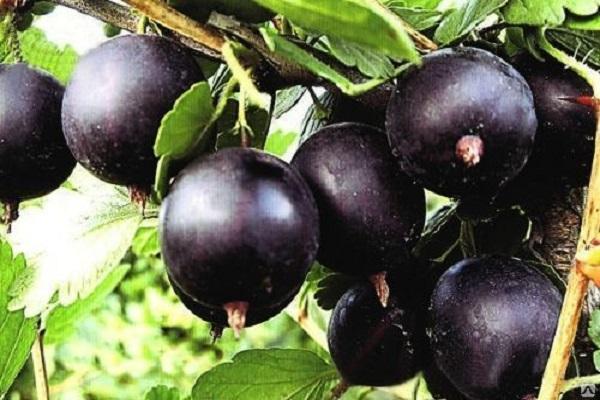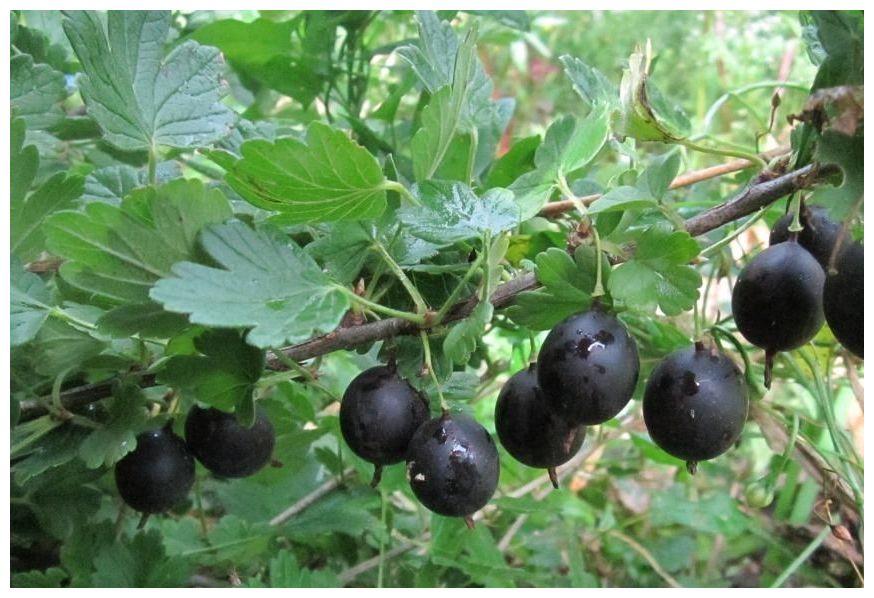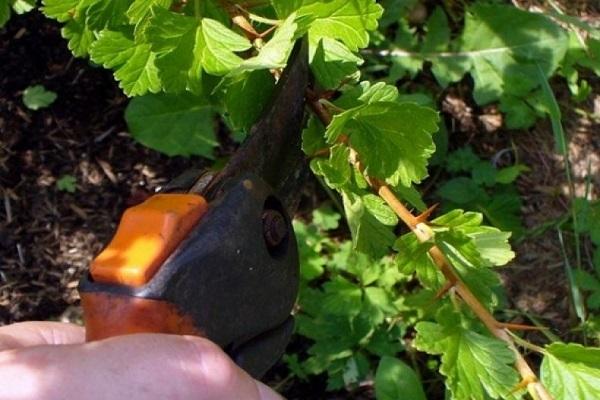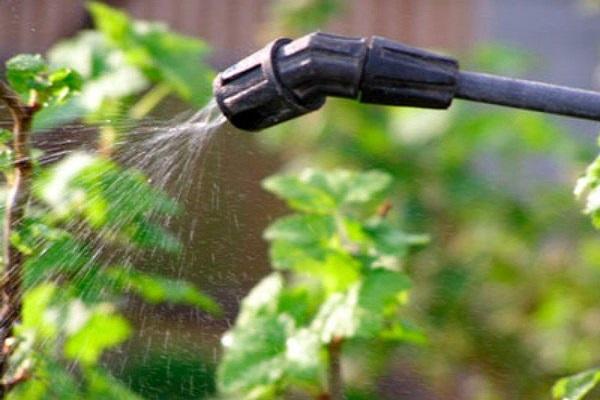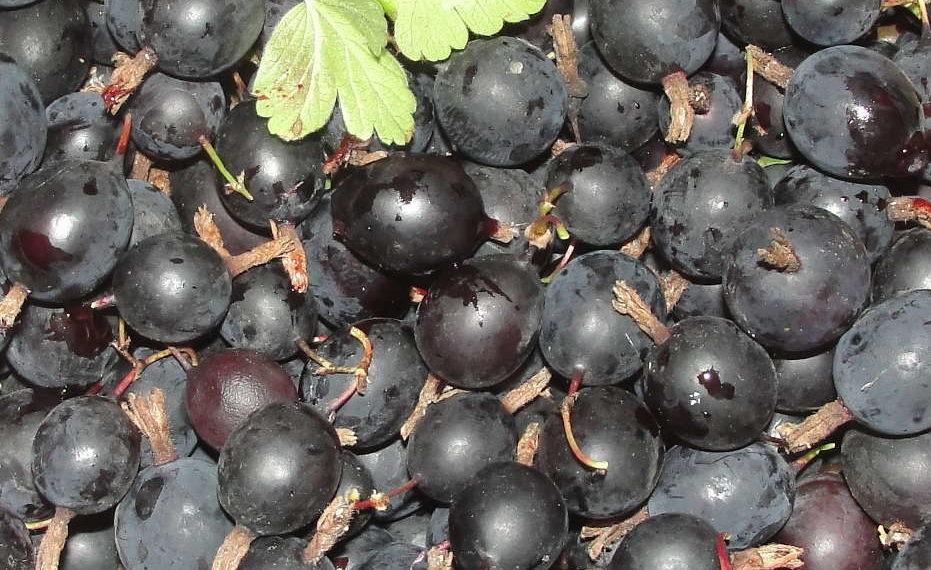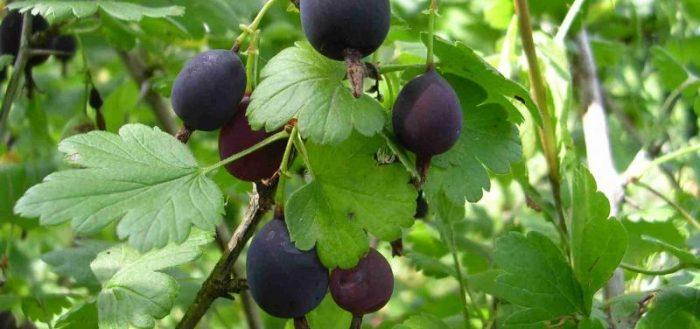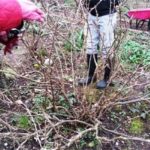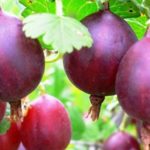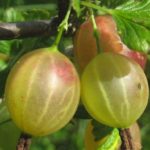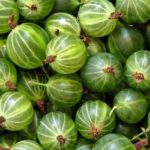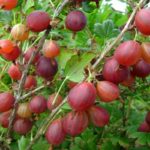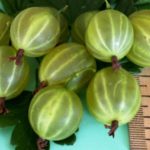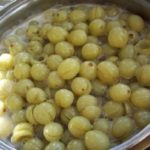Gooseberries are valued by consumers for their benefits and excellent taste. The only drawback, due to which not every summer resident undertakes to grow it, is the large number of thorns, which make picking the berries difficult. Among the wide variety, experts especially highlight the black gooseberry variety, comparing it in taste characteristics with grapes. Let's figure out why it is so useful and in what conditions it is necessary to grow black gooseberries.
- Features of culture
- Technical description and external parameters
- How is it different from regular gooseberries?
- How to plant and grow bushes
- Disembarkation dates
- Soil requirements
- Preparing plants and planting pit
- Scheme and distance of planting gooseberry bushes
- Conditions for good growth and fruiting
- Optimal place to grow
- Frequency of irrigation and fertilizing
- Bush formation technology
- Treatment for diseases and insects
- Methods of propagation of chokeberry crop
- Popular varieties and their characteristics
- Black Prince
- Negus
- Grape
- Isabel
- Black velvet
Features of culture
The main feature of the crop that distinguishes it from other varieties is not its appearance or taste, but its beneficial properties. Black gooseberries are especially appreciated by nutritionists and recommend their use to their patients. Its berries have an unusual appearance, and the peel looks more like black velvet. Breeders have developed many black gooseberry hybrids that have unusual properties. The general advantages of culture include:
- pleasant appearance;
- resistance to adverse weather conditions;
- strong immunity.
Technical description and external parameters
The external parameters of black gooseberries differ from the usual ones. The bush grows in width by about 1.5 meters, and in some cases, with proper care, up to 2 meters. The branches of black gooseberry are thick and strong, covered with a large number of thorns. The size of the berries and their appearance vary depending on the selected variety, but they are united by:
- pleasant, strong aroma;
- bright taste.
Note! Black gooseberries do not fall off after ripening and remain on the branches for a long period of time.
How is it different from regular gooseberries?
Black differs from more common varieties of gooseberries in the following properties:
- the proportion of vitamin C contained in one berry of dark varieties is several times higher than standard values;
- natural antioxidant;
- systematic use allows you to cleanse the body, ridding it of unnecessary toxins and harmful substances;
- long-lived among other crops. The bush lives quietly for twenty or more years;
- contains a large number of minerals that enrich the body.
How to plant and grow bushes
Gooseberry bushes are not very capricious, and even a novice gardener can grow them. However, it is necessary to adhere to general breeding rules, without which no crop can grow. These include:
- disembarkation within the allotted time;
- soil suitability;
- proper preparation of the landing site;
- the use of basic planting schemes, thanks to which the gooseberry bushes develop harmoniously.
Follow these rules, and your gooseberry will take root on the site without any problems.
Disembarkation dates
Planting dates are common to all crops. Highlight:
- autumn planting;
- spring planting.
Autumn is considered a more favorable time. The bush manages to grow its root system, and next spring it begins to bear fruit. This method is suitable for regions with warm or moderately cold autumns.
In cool regions, planting begins in the second half of August, in warm regions - from late September to early October.
In the spring, gooseberries are planted by those gardeners who did not have time to do so during the fall. The main thing here is to choose the right moment. The fact is that the culture is sensitive to sudden temperature changes. An unexpected spring thaw or sharp frosts will destroy the fragile seedling. The best time is when the buds have not yet begun to swell and the ground has thawed from winter frosts.
Soil requirements
The plant has no particular preference for soil, showing good growth dynamics under any conditions. If you are highlighting your preferred soil compositions, choose locations:
- loamy soils;
- slightly acidic or neutral.
Otherwise, there are no special preferences, and the gardener chooses a location based on his own preferences.
Preparing plants and planting pit
Requirements for the plant before planting:
- the roots of the seedling are soaked in a solution with organic fertilizers for a day before planting;
- if the root system looks compacted, carefully run your fingers along the border of the earthen ball, straightening the small roots.
Requirements for the landing pit:
- foreign plants and weeds are removed at the planting site;
- the soil is dug up and enriched with fertilizers with a high potassium content;
- the hole for planting is at least 50 centimeters wide;
- The depth of the pit is at least 40 centimeters.
Note! After planting, the bush is irrigated with a moderate amount of water.
Scheme and distance of planting gooseberry bushes
The planting pattern and distance are calculated depending on the desired result:
- if there is a lot of free space on the plot, and the gardener plans to harvest a large crop, the distance between the rows should be at least 2 meters. The distance between bushes is from 1 to 1.5 meters;
- in cases where there is not enough space, the plantation is formed as follows: the distance between the bushes is from 60 to 80 centimeters, the distance between the rows is from 1 to 1.2 meters.
Conditions for good growth and fruiting
Positive growth dynamics and abundant harvests are achieved by maintaining optimal growing conditions. These include:
- choosing the right place;
- frequency and abundance of watering;
- amount of fertilizer applied;
- bush formation;
- carrying out preventive procedures aimed at combating pests and diseases.
A plant that is provided with comfortable growing conditions will form a strong bush on which a decent harvest will grow.Neglecting the above points will cause the death of the crop or a small number of berries at the end of the season.
Optimal place to grow
When choosing a landing site, pay attention to the following things:
- the area should be flat, without sudden changes in height;
- Shaded areas are a bad choice. Gooseberries love sunlight, and without it they grow weak. Plantings organized in shady areas are more likely to develop powdery mildew;
- if a summer resident wants to plant a crop next to a fence, leave a gap between the plantation and the fence. During growth, the plant grows greatly, and if you plant it end to end, the fence wall will not allow the bush to grow normally;
- If possible, place plantings near drainage channels. This way, excess water will be drained away from the roots, preventing them from rotting.
Frequency of irrigation and fertilizing
The irrigation process is divided into several stages, depending on the season and stage of growth. Young plants planted on the site for the first year are watered abundantly and systematically. Soil moisture is determined as follows:
- at the place of growth, dig a small hole, 20 centimeters deep;
- a part of the soil is extracted from it, which is compressed in the hand;
- a compressed lump of earth is dropped down from a height of one meter;
- the lump remains intact or breaks up into several large segments – the humidity is sufficient;
- If the earthen lump has crumbled into small pieces, watering is required.
Mature, mature plants are watered intensively until the berries begin to swell, after which watering is reduced to a minimum. This way the fruits will taste sweet, having collected a sufficient amount of sugar. Otherwise, when eaten, sour notes will be clearly felt.
It is advisable to feed with complex mineral fertilizers containing a balanced amount of nutrients. Seasonal feeding is divided into:
- spring The first feeding is done in March-April, before buds open. The second - in May, before flowering;
- summer Performed in June;
- Autumn feeding is carried out in the second half of September and early October.
Bush formation technology
Correct and timely formation of a bush is an important process that requires special attention from the summer resident. The thing is that the gooseberry bush grows intensively, and there are many thorns on its branches.
If you do not trim it in time, then getting to the harvest will be extremely problematic.
Pruning is done in the fall. All old or damaged branches are removed from the bush. Ultimately, there should be several strong shoots with branches, the length of which should not exceed 50 centimeters.
Note! The tool used is special scissors with long handles, otherwise you risk damaging your hands.
Treatment for diseases and insects
Gooseberries have good immunity, which allows them to effectively fight pests. However, the planting could use some attention from the gardener. The following are used as preventive measures:
- Spring spraying of bushes with boiling water in which a small amount of manganese is diluted. The dosage depends on the number of bushes, and recipes for preparing such a solution are easy to find on our portal.
- If infected or damaged branches are found, they are removed and burned as far away as possible.
- In the fall, during preparation for the winter season, leaves and other debris are removed from the area.
Methods of propagation of chokeberry crop
The chokeberry crop, like all its other representatives, reproduces in standard ways:
- Reproduction by layering. This method is considered one of the most effective, since along the entire length of the shoot, in the area of bud formation, a root system is formed, which is in its infancy.
- By shoots. To implement it, it is enough to cut off the shoots that form close to the base of the bush. The only condition for using this method is the limited age of the mother bush. It should not exceed 9 years.
- Branches. A powerful, well-formed branch is selected and separated from the main plant along with part of the root system. The branch is buried in a new place, and after some time it grows into a full-fledged bush.
- By division, when the old bush is dug up and divided into two parts. The old, non-viable part is thrown out, and the new one is transplanted to another place.
- By cuttings. Shoots are cut from the mother bush and planted in a new location. The cuttings take root well and show intensive growth with proper care.
Popular varieties and their characteristics
There are quite a lot of chokeberry varieties, and among the popular ones that are in great demand among gardeners are:
- Gooseberry variety Black Prince.
- Gooseberry variety Black Negus.
- Gooseberry variety Grape.
- Isabel.
- Black velvet.
Black Prince
The Black Prince gained popularity due to the following positive qualities:
- forms a large number of berries;
- long fruiting period;
- the berries are juicy and soft;
- has a pleasant aroma.
Its appearance is due to the breeding activities of I.V. Michurina.
Negus
It produces a bountiful harvest that stays on the branches for a long time without falling to the ground.As it grows, it expands greatly and, if you don’t take care of it, picking berries will turn into a painful process. The berries are medium in size but have a pleasant taste, and many compare it to grapes. The berries are formed abundantly and systematically.
Grape
A wine variety whose berries contain large amounts of sugars and vitamins. It is used both fresh and as a base for making wine, compote or marmalade. The berries have different colors. There are dark purple or dark blue tones.
Isabel
It has medium dimensions, which does not prevent it from forming large, juicy berries. There are thorns on the branches, but not as many as others. The skin of the berries is strong, but thin, and the weight of one fruit can reach 3.5 grams. The berries ripen in the first half of August. It is important not to miss this moment, since ripe fruits tend to crumble to the ground.
Black velvet
The fruits on the branches begin to ripen very early. The berries are very large, and the weight of one varies from 5 to 8 grams. The thorns on the branches practically do not form, and picking fruits becomes a complete pleasure. Black velvet withstands environmental influences. The bush needs active formation, otherwise it begins to age quickly.

